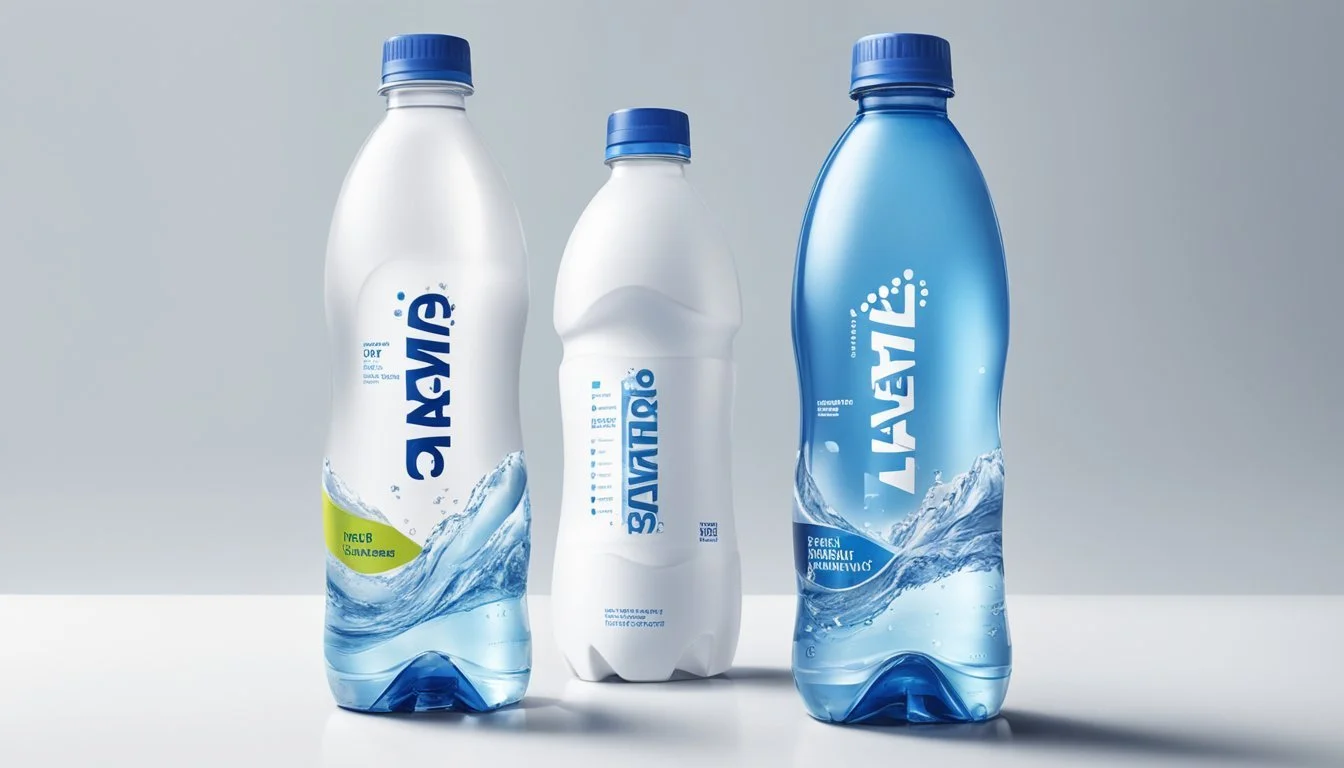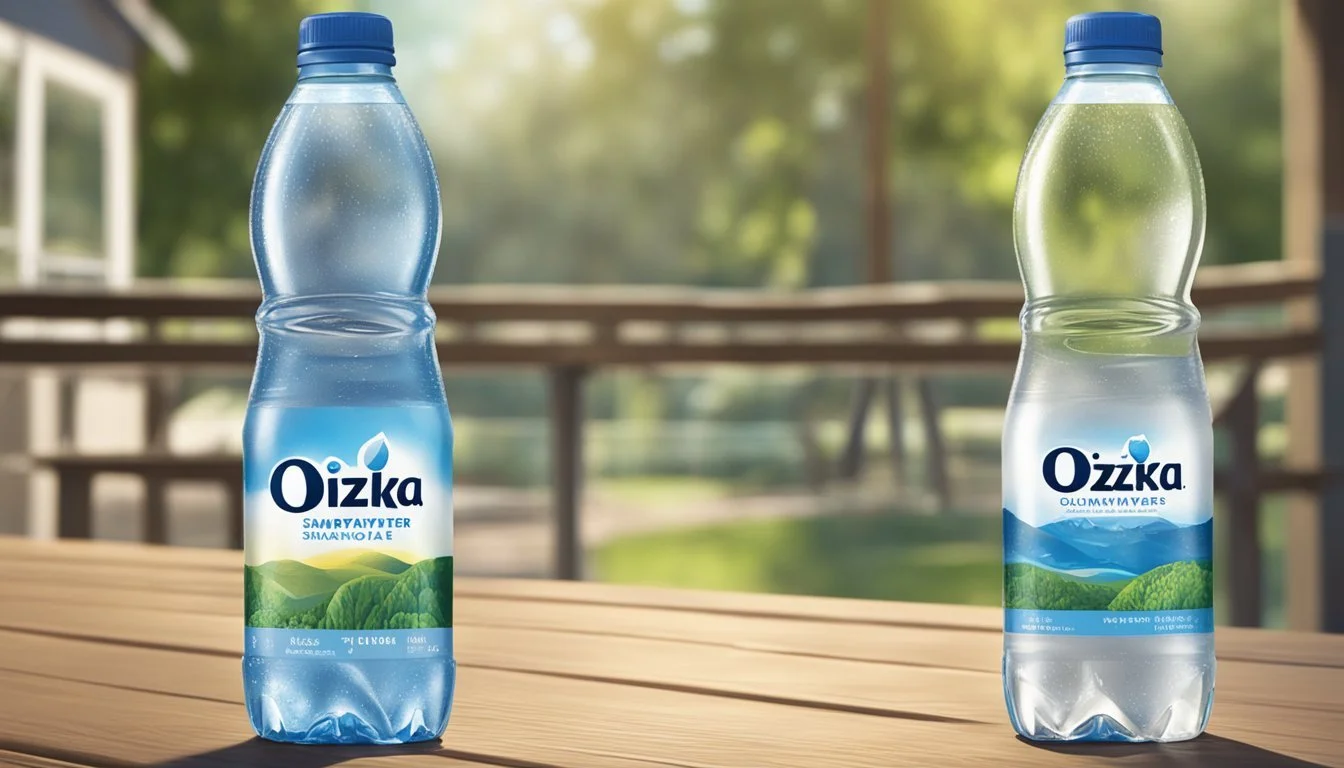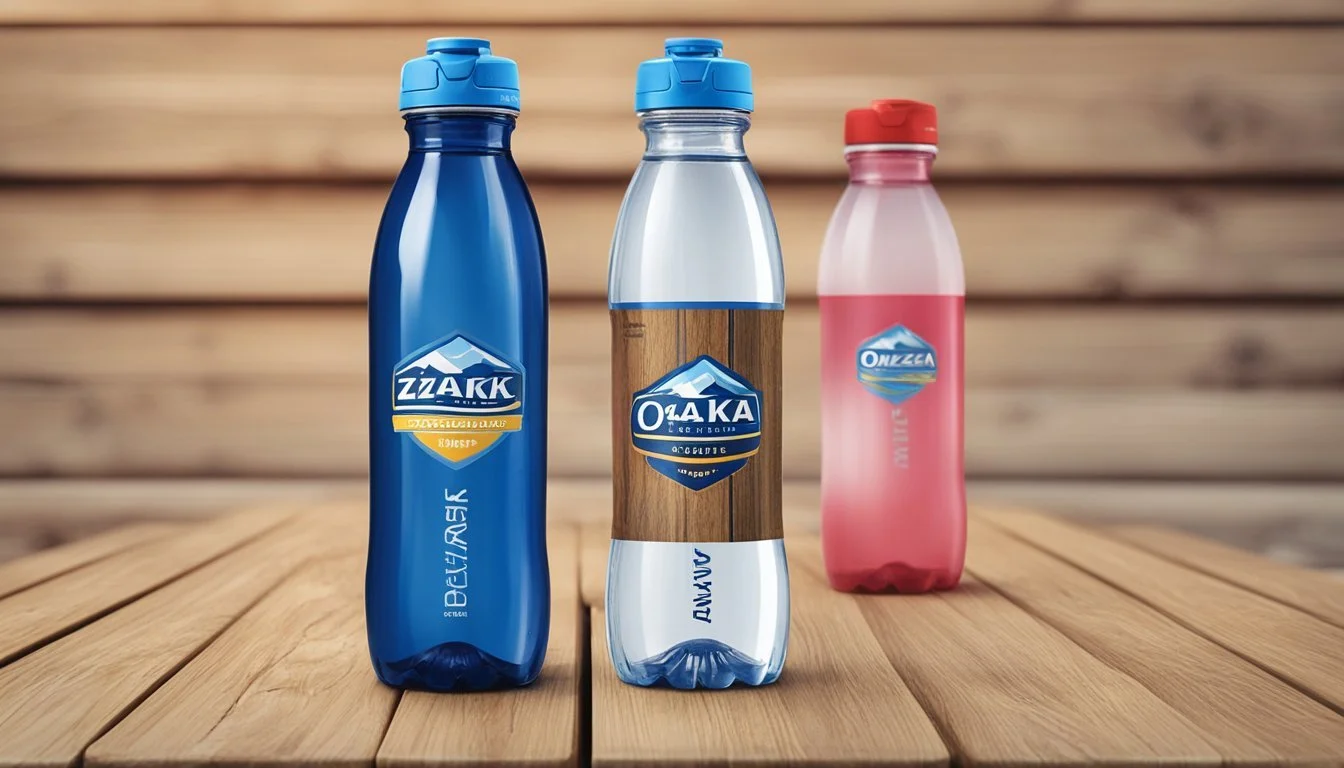Ozarka vs. Smartwater
Comparing Quality and Taste in Bottled Water Brands
In the realm of bottled water, consumers often find themselves comparing different brands to decipher which offers the better hydration experience. Ozarka and Smartwater represent two notable brands within this competitive market. Originating from different sources, these brands have crafted distinct identities—Ozarka priding itself on being natural spring water from Texas, and Smartwater, known for its vapor-distilled process and added electrolytes.
Deciding which bottled water is superior largely depends on individual preferences regarding taste, purity, and the added health benefits each brand purports to offer. Ozarka's appeal lies in its regional sourcing and natural minerals, whereas Smartwater's filtration technique and enhancement with electrolytes cater to those seeking a more refined flavor and hydration supposed to mimic the natural process of cloud formation and rain.
The debate between Ozarka and Smartwater extends beyond personal taste to include considerations of environmental impact, cost efficiency, and accessibility. This discussion aims to dissect these factors, providing consumers with a comprehensive understanding of what sets these bottled waters apart, enabling an informed decision on which water best suits their needs.
The Battle of Brands
When considering bottled water, consumers often weigh the reputation of brands like Ozarka and Smartwater. Each brand has unique selling points that cater to different preferences and values.
Ozarka: A Close Look
Ozarka, a brand with deep roots in the United States, specifically targets consumers who prefer natural spring water sourced from local springs. The company boasts that its water is 100% natural spring water, coming from three springs located in Texas. Ozarka's marketing efforts emphasize not only the quality of its water but also its regional heritage, which resonates with consumers who prioritize local products.
Source: Texas springs
Packaging: Recyclable plastic
Offerings:
Spring water
Consumer Appeal: Locality and natural sourcing
Smartwater: Brand Overview
Smartwater, on the other hand, positions itself as a premium brand within the bottled water market. It utilizes vapor distillation—a process inspired by the natural water cycle—with the addition of electrolytes for taste. This process is designed to ensure purity and a clean, crisp taste, which appeals to health- and fitness-conscious consumers. Smartwater is typically priced higher than traditional bottled water, reflecting its premium positioning.
Source: Vapor distillation with electrolytes
Packaging: Recyclable plastic, some bottles made from 30% plant-based materials
Offerings:
Still water
Sparkling water
Consumer Appeal: Purity, taste, and premium quality
Water Source and Quality
When comparing Ozarka and Smartwater, one must consider the origin and handling of the water. The collection sources, purification processes, and quality assurance methods play a pivotal role in determining the superiority of bottled water.
Natural Sources and Collection
Ozarka: Ozarka water is sourced from multiple natural springs in Texas. These springs provide naturally filtered spring water, which is often rich in minerals and comes from protected underground sources.
Smartwater: In contrast, Smartwater starts with municipal water which is then purified. The source is not natural spring water, but rather purified public water supplies.
Purification Process
Ozarka: Ozarka's spring water is subjected to a light filtration and ozonation process to ensure cleanliness without stripping away beneficial minerals.
Smartwater: Smartwater undergoes a rigorous purification process that includes distillation and the addition of electrolytes like calcium chloride and magnesium chloride for taste. This process results in a purified product that is clean and free of contaminants.
Quality Assurance
Ozarka: Ozarka emphasizes strict quality assurance by monitoring the mineral content and maintaining the natural purity of the water. It meets all FDA standards for spring water.
Smartwater: Smartwater prides itself on quality and taste, with the brand maintaining quality assurance by re-mineralizing purified water to ensure consistent taste and incorporating electrolytes for a distinctive crispness. It also adheres to strict FDA regulations for purified water.
Health and Hydration
Choosing between bottled water brands like Ozarka and Smartwater for health and hydration revolves around several critical aspects, such as electrolyte and mineral content, pH levels, and the presence of contaminants. Both brands offer certain benefits, but the ideal choice may depend on individual hydration needs and health considerations.
Electrolytes and Mineral Content
Ozarka, sourced from springs in Texas, provides naturally occurring electrolytes and minerals, which are beneficial for maintaining bodily functions. Smartwater, however, is vapor-distilled, with added electrolytes like calcium chloride, magnesium chloride, and potassium bicarbonate for taste and hydration efficiency. This can be likened to brands such as Fiji, which is known for its high mineral content, and Essentia, which also includes electrolytes for taste.
pH Levels and Health Implications
Smartwater positions itself as an alkaline water, which means it has a higher pH level than traditional tap water. A higher pH level is often associated with the ability to help neutralize acid in the bloodstream, but these health benefits have been debated and are not conclusively proven. In contrast, Ozarka's pH level is closer to that of neutral pure life or tap water, potentially making it less impactful on the body's acid-base balance.
Contaminants and Safety
Both Ozarka and Smartwater adhere to stringent quality controls to ensure the safety of their water. It is crucial to assess the presence of heavy metals, PFAS chemicals, and other contaminants. Ozarka's natural source typically undergoes testing for contaminants, while Smartwater's distillation process effectively removes impurities. The absence of contaminants is a key selling point for these and other brands such as Fiji, which emphasizes the purity of its water.
Taste and Texture
When comparing Ozarka and Smartwater, discerning consumers often evaluate their choices based on the flavor profiles and mouthfeel that each brand offers.
Flavor Profiles
Ozarka, sourced from natural springs in Texas, often conveys a distinct taste that reflects its regional origin. The minerals from the spring contribute to its overall earthy and naturally refreshing flavor. In contrast, Smartwater undergoes a vapor-distillation process, with added electrolytes for taste, resulting in a pure and clean profile that some consumers might describe as smooth.
Ozarka: Earthy, mineral-rich, refreshing
Smartwater: Pure, smooth, slightly electrolyte-enhanced for taste
Mouthfeel and Sensory Experience
The mouthfeel of water can greatly influence consumer preference. Ozarka's spring-sourced water has a robust and refreshing texture, which can be described as invigorating. Alternatively, Smartwater's vapor-distilled process aims for a luxurious mouthfeel, often characterized as smooth and silky. These sensory experiences provided by each brand contribute to the choices consumers make based on their individual taste preferences.
Ozarka: Robust, refreshing, invigorating
Smartwater: Luxurious, smooth, silky
Environmental and Economic Factors
When assessing bottled water brands like Ozarka and Smartwater, one must take into account their environmental footprint and pricing structure.
Environmental Impact
Ozarka, predominantly sourced in Texas, prides itself on local sourcing to reduce transportation emissions. However, it is marketed by Nestlé Waters, a company criticized for its impact on local water supplies in various regions. As for Smartwater, owned by Coca-Cola, it comes with a higher carbon footprint due to the energy-intensive vapor distillation process.
The bottled water industry, including brands like Poland Spring and Voss, has often been scrutinized for its environmental implications. The production and disposal of plastic bottles contribute significantly to pollution and waste. Companies like Boxed Water seek to mitigate this with more sustainable packaging, earning a nod from environmental enthusiasts. The International Bottled Water Association advocates for reducing environmental impact through various initiatives, yet bottled water remains a contentious issue.
Cost Comparison
Bottled water can range from affordable to luxury pricing. Here is a brief comparison:
Ozarka: Generally considered cost-effective, often found in larger volumes at competitive prices.
Smartwater: Positioned as a premium product, typically more expensive due to its vapor distillation process and marketing as a designer water.
Starbucks and similar outlets may retail bottled water at a higher price point due to convenience. While companies like Nestle and Coca-Cola have vast distribution networks that can impact pricing through scale, the value proposition becomes less clear when inexpensive tap water is an accessible alternative.
Consumer Insights
In assessing the competition between Ozarka and Smartwater, consumer insights provide valuable perceptions regarding market trends and brand loyalty that shape the bottled water industry.
Market Trends
Consumers today are increasingly informed about the bottled water they consume, often seeking information about the source and purity of the water. Smartwater has built its brand on the process of vapor-distillation, followed by the addition of electrolytes for taste. This promise of purity and added health benefits aligns with the current trend of health-conscious consumer behavior.
Fiji is another brand that capitalizes on the image of pristine sources, marketing its water as originating from a natural artesian aquifer in Fiji.
Nestlé Pure Life, while boasting a global presence, often faces scrutiny regarding the sources of its water.
Icelandic Glacial is known for its low mineral content and alkaline pH level, attributes appreciated by a niche consumer base.
Companies like Zephyrhills and Ozarka emphasize their regional identity, appealing to consumers' sense of local pride and sustainability by showcasing their water as pure and locally sourced.
Brand Loyalty and Perception
Brand loyalty in the bottled water market is driven by perception, shaped largely through marketing efforts and consumer experiences. Smartwater has a strong following due in part to its sleek branding and endorsement by high-profile figures. Consumers often express their preferences and experiences with these brands across social media platforms such as Twitter and YouTube, where influencer endorsements can have a significant impact.
Smartwater: Known for its association with celebrities and high-quality imagery, typically perceived as a premium brand.
Ozarka: Enjoys loyalty among regional consumers who prefer local brands, often praised for its taste and commitment to local communities.
Journalists like Ryan Felton have raised awareness about the presence of contaminants in some water bottle brands, influencing consumer perceptions of bottled water and their buying decisions. As consumers voice their concerns and advocate for transparency, brands that openly share information and maintain high-quality standards, like Icelandic Glacial, tend to foster greater trust.
Packaging and Branding
In the battle of Ozarka versus Smartwater, packaging and branding play pivotal roles in consumer preference, balancing aesthetics with sustainability and deciphering the messages that each brand promotes.
Bottle Design and Materials
Ozarka utilizes a mostly clear, ribbed bottle design, generally made of recyclable PET plastic to convey a message of pure, natural spring water sourced from Texas. The label prominently features the brand's logo and a scenic Texan landscape, appealing to regional pride and nature enthusiasts. Similarly, Smartwater also uses a transparent PET plastic bottle but opts for a sleek, minimalist design. Its clean lines and lack of texture embody the brand's image of sophistication and purity. Smartwater stands apart by also offering a "plant bottle," which contains up to 30% plant-based materials.
Marketing Strategies
Smartwater has positioned itself as a premium water brand, aligning with celebrities and fashion influencers through sponsorships and advertisements. This strategic move not only heightens its brand visibility but also establishes it as a lifestyle choice for those aspiring to a certain status. Ozarka, on the other hand, appeals to a sense of local identity and community. Its marketing strategy often includes highlighting its Texas roots and commitment to local initiatives, making it a familiar choice for residents. Neither strategy is overly aggressive, instead they focus on fostering a brand image that resonates with their target demographics.
Additives and Enhancements
In the competition between Ozarka and Smartwater, the presence of additives and enhancements plays a significant role. These bottled waters distinguish themselves through the inclusion of minerals and other elements that aim to offer benefits such as improved rehydration and taste.
Electrolytes for Rehydration
Ozarka, sourced from three springs in Texas, is natural spring water that contains minerals but does not have added electrolytes for taste. In contrast, Smartwater is vapor-distilled with added electrolytes such as potassium bicarbonate and calcium chloride for taste enhancement. The addition of these electrolytes is designed to create a clean and refreshing taste, while also helping to replenish minerals lost during dehydration.
Ozarka: Natural minerals, no added electrolytes.
Smartwater: Added electrolytes for taste and rehydration.
Flavoring and Sweeteners
Neither Ozarka nor Smartwater contains sweeteners, maintaining their profile as clean and rejuvenating beverages without the caloric content of sugary drinks. However, both brands have flavored options available. Ozarka offers a variety with natural fruit flavors, giving consumers a fruity alternative without added sugars. Smartwater, on the other hand, keeps its flavored water options subtle and free from sugars and calories, aiming for a light hint of taste.
Ozarka: Natural fruit flavors, no added sugars.
Smartwater: Lightly flavored options, zero sugars.
Regulations and Standards
In the comparison of Ozarka and Smartwater, it's essential to understand the specific regulations and standards that govern bottled water quality, as well as the processes involved in ensuring the safety and purity of these products.
Bottled Water Certification
Bottled water companies, like Ozarka and Smartwater, often seek certification from organizations like the International Bottled Water Association (IBWA) to validate their adherence to industry standards. The IBWA's guidelines incorporate federal regulations and often exceed them in terms of testing frequency and a broader spectrum of contaminants. For instance, Smartwater, which is vapor-distilled with added minerals for taste, must meet stringent purity benchmarks set by regulatory bodies.
Quality Assurance: Both Ozarka, sourced from Texas springs, and Smartwater must comply with the Food and Drug Administration (FDA) standards for quality. The FDA compares bottled water regulations to the Environmental Protection Agency (EPA) standards for tap water, sometimes with even stricter criteria for bottled water.
Mineral Content: Ozarka, being mineral water, is expected to maintain consistent levels of trace minerals like calcium and magnesium, which are naturally occurring in its source springs. Smartwater also includes added electrolytes such as potassium, calcium, and magnesium for taste.
Testing for Purity and Safety
Regular testing is essential to ensure the absence of harmful contaminants such as arsenic and mercury, which can pose serious health risks.
Testing Procedures: Both brands test for a range of contaminants. Ozarka and Smartwater undergo regular testing to ensure that levels of dissolved solids, potentially harmful chemicals like arsenic, and heavy metals like mercury, are well below the limits set by the FDA.
Enhanced Treatment: Smartwater is purified through distillation, after which, it is remineralized with a defined blend of electrolytes for taste. Ozone is often used in the bottling process as a powerful disinfectant to provide additional protection against contaminants. Ozarka also ensures safety by using protective measures such as microfiltration and ozone treatment.
pH Levels: While Smartwater is typically marketed for its purity and clean taste, some consumers might prefer Ozarka for its naturally high pH characteristic of alkaline water. Regulations ensure that pH levels meet safety standards and are clearly labeled for consumer knowledge.






